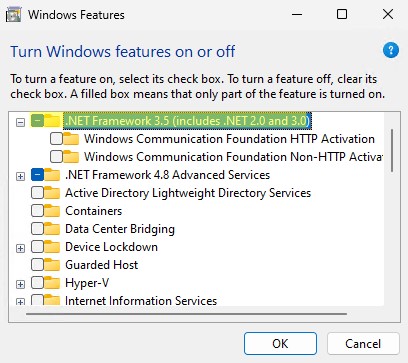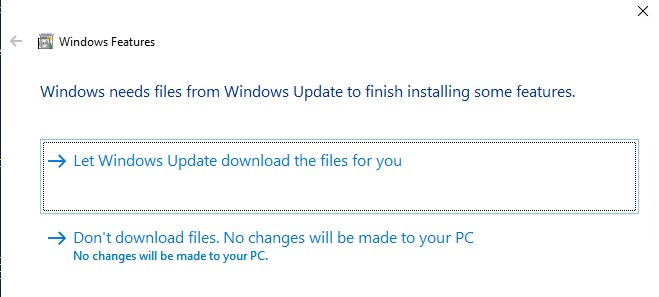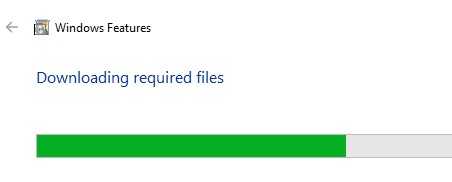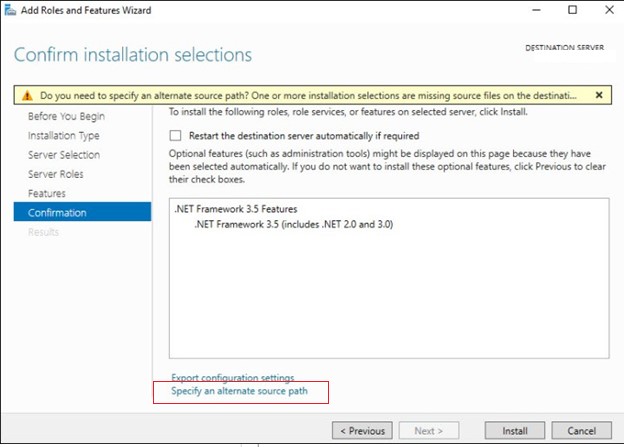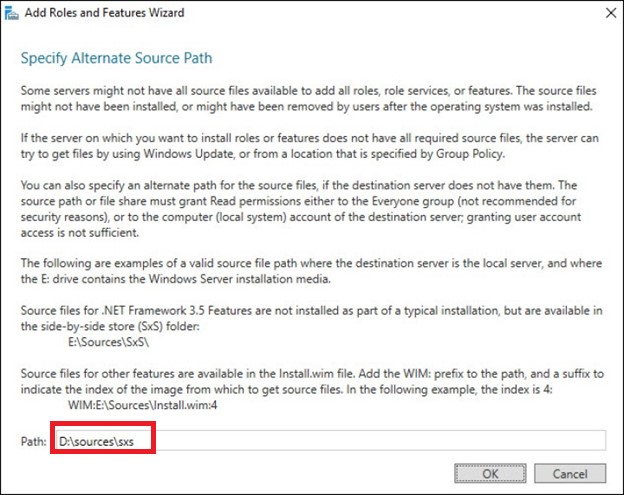Большинство современных приложений Windows требуют наличия установленного .NET Framework. Например, в Windows 11/10 и Windows Server 2022/2019 по умолчанию уже установлена версия NET Framework 4.8. Однако некоторые старые приложения требуют наличия установленного .NET Framework 3.5, 2.0 или даже 1.0.
В этой статье мы рассмотрим, как установить .NET 3.5 в Windows 11/10 и Windows Server 2022/2019/2016.
Содержание:
- Установка .NET Framework 3.5 в Windows 11 и 10
- Как установить .NET 3.5 в Windows Server 2022/2019/2016?
- Настройка параметров офлайн установка .Net 3.5 помощью GPO
Установка .NET Framework 3.5 в Windows 11 и 10
Проверьте, что .NET Framework 3.5 (включает в себя .NET 2.0 и 3.0) не установлен на вашем компьютере. Для этого, откройте консоль PowerShell с правами администратора и выполните команду:
Get-WindowsCapability -Online -Name NetFx3~~~~

В нашем случае .NET 3.5 не установлен (
State=NotPresent
).
В Windows 10/11 вы можете установить .Net Framework из панели Turn Windows Features on or off:
- Выполните команду
optionalfeatures.exe
; - В списке компонентов выберите .NET Framework 3.5 (includes .NET 2.0 and 3.0), нажмите ОК;
- Если на вашем компьютере есть доступ в Интернет, в следующем окне выберите Let Windows Update download the files for you;
-
- Windows скачает и установить последнюю версию компонента .NET Framework 3.5 с серверов Microsoft Update.
Также вы можете установить .NET Framework 3.5 из командной строки:
- С помощью DISM:
DISM /online /Enable-Feature /FeatureName:"NetFx3" - Из PowerShell:
Enable-WindowsOptionalFeature -Online -FeatureName "NetFx3"
Если ваш компьютер не подключен к интернету или находится в изолированной сети, то при установке .NET 3.5 появится ошибка:
Windows couldn’t complete the requested changes. The changes couldn’t be completed. Please reboot your computer and try again. Error code: 0x8024402C
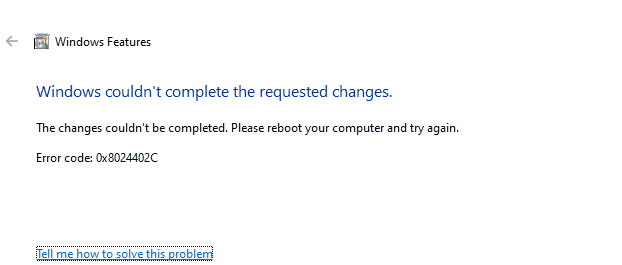
В этом случае вы можете вручную установить компоненты NET 3.5 с вашего установочного образа (диска) Windows. Для этого вам понадобится установочная USB флешка или файл с ISO образом вашей версии Windows (как проверить версию Windows в ISO образе):
- Подключите ваш носитель с ставочным образом Windows к компьютеру. В моем случае у меня есть файл Windows11-22h2.iso. Щелкните по файлы и выберите Mount, чтобы смонтировать образ в виртуальный DVD привод (или воспользуйтесь командой PowerShell:
Mount-DiskImage -ImagePath "C:\distr\Windows11-22h2.iso"
); - В моем случае виртуальному приводу с образом была назначена буква диска E: (мы будем использовать эту букву в следующих командах);
- Чтобы установить .Net 3.5 из файлов компонентов на установочном диске выполните команду:
DISM /online /enable-feature /featurename:NetFX3 /All /Source:E:\sources\sxs /LimitAccess
Или (аналогичная PowerShell команда):
Add-WindowsCapability -Online -Name NetFx3~~~~ -Source E:\Sources\SxS

Чтобы проверить, что .NET Framework успешно установлен, выполните команду:
Get-WindowsCapability -Online -Name NetFx3~~~~
Name : NetFX3~~~~ State : Installed DisplayName : .NET Framework 3.5 (includes .NET 2.0 and 3.0) Description : .NET Framework 3.5 (includes .NET 2.0 and 3.0) DownloadSize : 72822163 InstallSize : 496836410
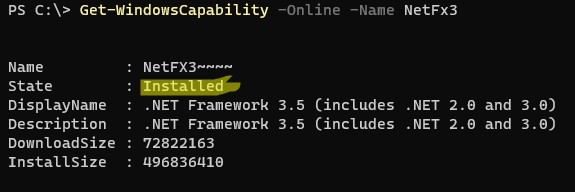
Выведите список версий .NET Framework, которые установлены на вашем компьютере:
Get-ChildItem 'HKLM:\SOFTWARE\Microsoft\NET Framework Setup\NDP' -Recurse | Get-ItemProperty -Name version -EA 0 | Where { $_.PSChildName -Match ‘^(?!S)\p{L}’} | Select PSChildName, version
[/alert]
Как установить .NET 3.5 в Windows Server 2022/2019/2016?
В Windows Server 2022,2019,2016 и 2012 R2 вы можете установить NET Framefork 3.5 несколькими способам:
- ерез Server Manager (Add roles and features -> Features -> .NET Framework 3.5 Features -> .NET Framework 3.5 (includes .NET 2.0 and 3.0 );
- С помощью DISM:
DISM /Online /Enable-Feature /FeatureName:NetFx3 /All - С помощью PowerShell:
Install-WindowsFeature NET-Framework-Core
При этом установочные файлы .NET 3.5 для вашей версии Windows Server будут загружены с серверов Windows Update. Чтобы сработал этот метод установки нужно убедиться:
- Ваш Windows Server должен иметь прямой доступ в Интернет. Настройки прокси-сервера и файервола не должны ограничивать доступ к серверам Windows Update.
- Хост не должен быть настроен на получения обновлений с локального WSUS сервера (проверьте настройки обновлений Windows в групповых политиках или напрямую в реестре);
Проверьте значение параметра UseWUServer в реестре:
Get-ItemProperty -Path "HKLM:\SOFTWARE\Policies\Microsoft\Windows\WindowsUpdate\AU" -Name "UseWUServer" | select -ExpandProperty UseWUServer
Если значение параметра равно 1, значить ваш хост будет пытаться получить обновления с локального WSUS сервера. В этом случае при установке .NET 3.5 появится ошибка 0x800F0954. Измените значение параметра на 0 или удалите его, чтобы подключиться напрямую к серверам обновлений Windows Update.
Если ваш сервер имеет доступ в Интернет, но настроен на получение обновлений со WSUS, при устапновке NET Framework появится ошибка 0x800f081f.
Решение: установить .Net 3.5 онлайн с серверов Microsoft и игнорировать локальный WSUS:
- Экспортируйте в reg файл текущие настройки Windows Update в ветке HKLM\Software\Policies\Microsoft\Windows\WindowsUpdate (
reg export HKLM\Software\Policies\Microsoft\Windows\WindowsUpdate c:\WindowsUpdateRegFile.reg
) - Удалите данную ветку (
Remove-Item -Path HKLM:\Software\Policies\Microsoft\Windows\WindowsUpdate -Recurse
) и перезапустите службу:
net stop wuauserv & net start wuauserv - Запустите установку .Net из Интернета:
DISM /Online /Enable-Feature /FeatureName:NetFx3 /All - После окончания установки верните настройки WU, импортировав reg файл (
Reg import c:\WindowsUpdateRegFile.reg
) и еще раз перезапустите службу Windows Update
Если с вашего сервера нет прямого доступа в Интернет, то при попытке установить .NET 3.5 в Windows Server через консоль Server Manager появится ошибка 0x800F081F (The source files could not be found), 0x800F0950, 0x8024402c, 0x800F0906 или 0x800F0907 (в зависимости от версии Windows Server).
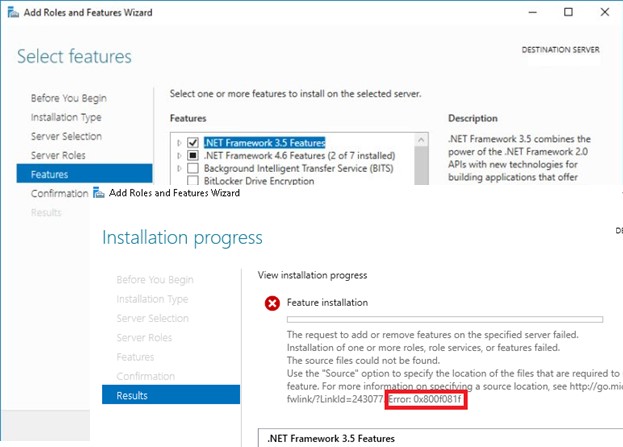
Хотя .NET Framework 3.5 присутствует в списке компонентов Windows Server 2022/2019/2016/2012R2, на самом деле его бинарные файлы в хранилище компонентов Windows отсутствуют (концепция Features on Demand). Это сделано, чтобы уменьшить размер образа операционной системы на диске. Вы можете проверить наличие.NET Framework 3.5 в локальном хранилище компонентов Windows Server с помощью команды:
Get-WindowsFeature *Framework*

Как вы видите статус компонента
NET-Framework-Core
– Removed.
Для установки NET-Framework-Core вам потребуется дистрибутив с вашей версией Windows Server в виде ISO файла, или в распакованном виде в сетевой папке. Смонтируйте ISO образ с дистрибутивом в отдельный виртуальный диск (например, диск D:).
Теперь вы можете установить .Net Framework 3.5 с помощью графической консоли Server Manager:
Установить компонент .Net 3.5 можно из графической консоли Server Manager. Для этого выберите компонент .Net Framework 3.5 Features, но, перед тем, как нажать кнопку Install, нажмите небольшую ссылку внизу мастера — Specify an alternative source path.
- Для этого выберите компонент .Net Framework5 Features. Перед тем, как нажать кнопку Install, нажмите на ссылку Specify an alternative source path внизу;
- Укажите путь к хранилищу компонентов (SXS) дистрибутива Windows Server. Если вы смонтировали дистрибутив в виртуальный привод, это может быть путь
D:\sources\sxs
. Также это может быть сетевая папка, куда вы предварительно скопировали дистрибутив (например,
\\server1\distr\ws2022\sources\sxs
). Нажмите ОК.
Гораздо проще установить компонент Net Framework 3.5 Features из командной строки или консоли PowerShell, запущенной с правами администратора. Просто выполните команду:
Dism.exe /online /enable-feature /featurename:NetFX3 /All /Source:D:\sources\sxs /LimitAccess

Где
D:\
— диск с вашим дистрибутивом Windows Server.
Параметр LimitAccess запрещает DISM подключение к серверам обновлений для получения установочных файлов компонентов. Используются только файлы в указанном каталоге.
Если вы хотите установить компонент Windows Server с помощью PowerShell, воспользуйтесь командой Add-WindowsFeature:
Add-WindowsFeature NET-Framework-Core -Source d:\sources\sxs
После завершения установки компонента, перезагрузка сервера не требуется.
Также вы можете вручную скопировать 2 cab файла
microsoft-windows-netfx3...
из каталога sources\sxs вашего дистрибутива. В этом случае для установки .Net 3.5 достаточно выоплнить команду:
dism /online /Add-Package /PackagePath:C:install\net35\microsoft-windows-netfx3-ondemand-package~31bf3856ad364e35~amd64~~.cab.
Настройка параметров офлайн установка .Net 3.5 помощью GPO
С помощью групповой политики Specify settings for optional component installation and component repair (находится в разделе GPO Computer Configuration -> Administrative Templates -> System) можно настроить особые параметры установки компонентов Windows из локального источника или Windows Update даже при использовании WSUS.
На отдельностоящем компьютере вы можете включить этот параметр политики с помощью редактора локальной GPO (gpedit.msc). В среде Active Directory вы можете создать политику для всех компьютеров/серверов с помощью консоли GPMC.
Здесь можно указать, что при установки или восстановлении компонентов Windows необходимо всегда загружать файлы из Интернета с серверов Windows Update вместо локального WSUS (опция Download repair content and optional features directly from Windows Update instead of Windows Server Update Services — WSUS).
Также можно указать путь к каталогу с компонентами Windows Server (или wim файлу), который нужно использовать при офлайн установке (указывается в параметр Alternate source file path). Вы можете указать:
-
- Путь к сетевой папке в UNC формате (
\\server\distr\ws2016\sxs
) (здесь можно указать несколько UNC путей через точки с запятой:
\\srv1\ws22\sxs;\\fs01\ws22\sxs;\\fs3\sxs
- Путь к сетевой папке в UNC формате (
- Также допустимо указывать WIM файл в качестве источника:
WIM:\\srv1\distr\ws2016\install.wim:2
(в этом случае
2
– это индекс образа вашей редакции Windows Server в WIM файле. Список доступных редакций в файле можно вывести так:
DISM /Get-WimInfo /WimFile:"\\server\distr\ws2016\install.wim"
)
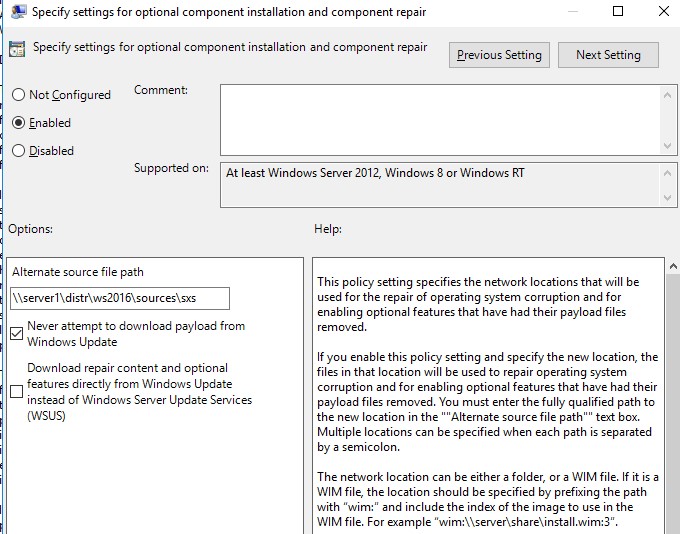
Для разных версий Windows Server нужно использовать разные источники с каталогом SXS. Если в вашей сети есть несколько версии Windows Server, нужно создать отдельные GPO с разными UNC путями к сетевой папке с SXS. Чтобы GPO применялась только к хостам с определенными версиями Windows Server, можно использовать WMI фильтры групповых политик.
We like to update .NET Framework in Exchange Server 2013/2016/2019 because we want to install Exchange Cumulative Update. What is the best approach to update .NET Framework in Exchange Server? Do we first update .NET Framework or run the Exchange Cumulative Update? These questions are asked a lot.
Many Exchange admins have seen Exchange Servers break and not work after a Cumulative Update. This article will teach you how to update .NET Framework when updating Cumulative Updates in Exchange Server.
Table of contents
- Introduction
- Keep .NET Framework and Exchange Server up to date
- How to update .NET Framework and Exchange Server Cumulative Update
- Exchange Server 2013
- Exchange Server 2016
- Exchange Server 2019
- Conclusion
Introduction
It’s important to know that .NET Framework is a must for Exchange Server. When installing Cumulative Updates on Exchange 2013/2016/2019, we sometimes have to update .NET Framework. However, that is not always the case. Sometimes you can run the Cumulative Update without updating .NET Framework. Yes, we can download .NET Framework for free.
What Microsoft is saying about .NET Framework:
When upgrading Exchange Server from an unsupported CU to the current CU and no intermediate CUs are available, you should first upgrade to the latest version of .NET that’s supported by your version of Exchange Server and then immediately upgrade to the current CU. This method doesn’t replace the need to keep your Exchange servers up to date and on the latest supported CU. Microsoft makes no claim that an upgrade failure will not occur using this method, which may result in the need to contact Microsoft Support Services.
Keep .NET Framework and Exchange Server up to date
Keep your Exchange Server up to date so that you don’t have to carry out a longer update path. I recommend downloading the Exchange CU ISO when it’s available and save it to the hard disk. Microsoft does remove older Exchange CUs when newer versions are released. When saving the Exchange CU ISO, you can always carry out the upgrade path. You can use an unofficial website to download an older Exchange CU.
How to update .NET Framework and Exchange Server Cumulative Update
Don’t immediately update when a .NET Framework version or Exchange Server version is released. Always wait and check if bugs are rising. Don’t forget to always test the Exchange Server CU in a test environment before updating it in production.
I made a flowchart that will show the procedure on how to update .NET Framework and Exchange Server Cumulative Update for:
- Exchange Server 2013
- Exchange Server 2016
- Exchange Server 2019
To keep it simple, keep these two steps in mind when planning the update path:
- Update to the last Exchange version that is supported by the .NET Framework (blue arrow)
- Update to the last .NET Framework that is supported for the Exchange Server (green arrow)
Keep updating till you’re on the version that you want to be. It will most likely be the last released Exchange version.
Exchange Server 2013
Let’s have an example with the following company called EXOIP. The company is currently running Exchange Server 2013 CU10 and .NET Framework 4.5.1. They want to update to the latest Exchange Server version, which is Exchange Server 2013 CU23. Let’s look at how to do that without breaking the Exchange Server.
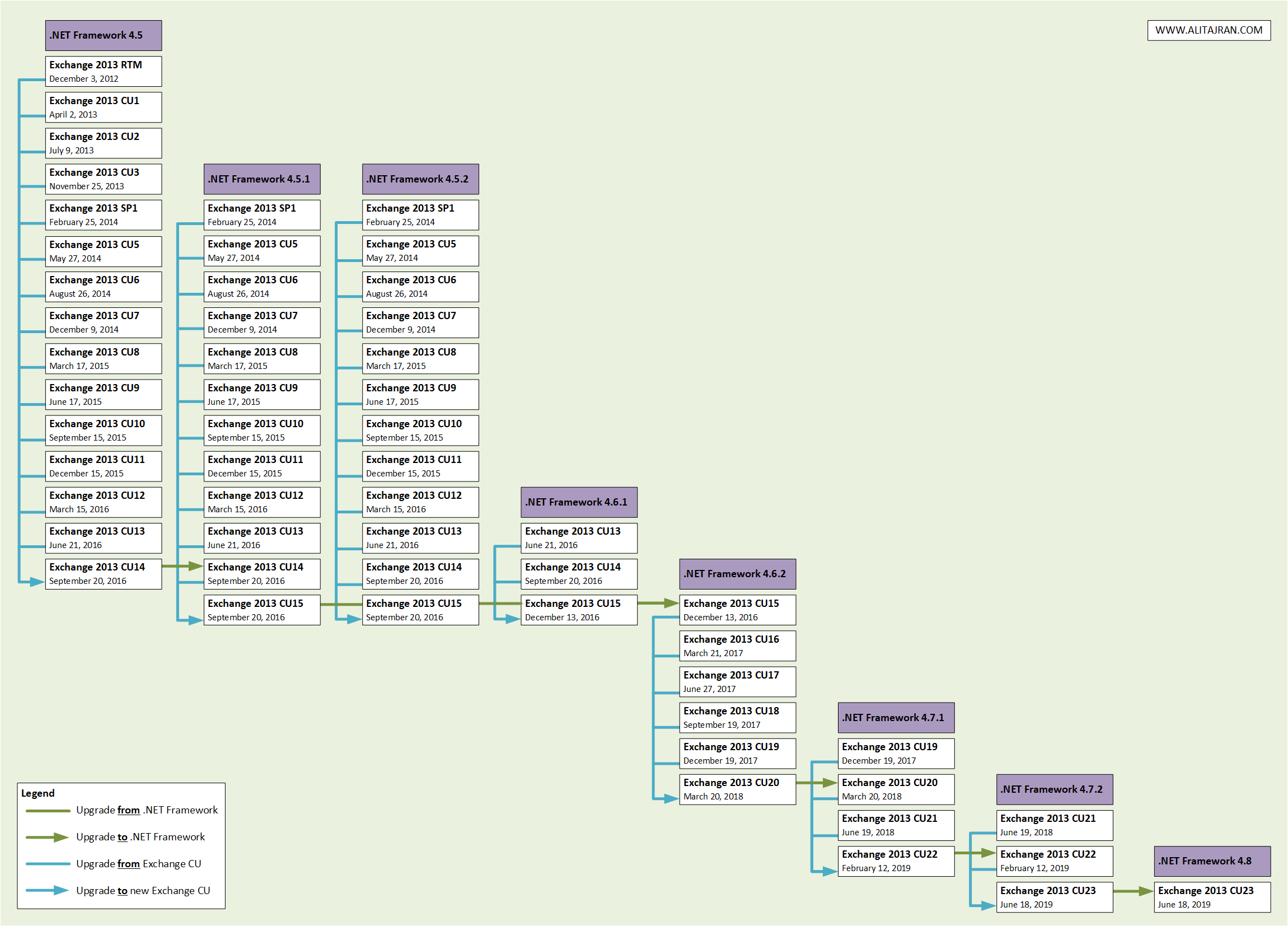
The Exchange 2013 upgrade compatibility path will be:
- Upgrade to Exchange 2013 CU15
- Upgrade .NET Framework to 4.6.2
- Upgrade to Exchange 2013 CU20
- Upgrade .NET Framework to 4.7.1
- Upgrade to Exchange 2013 CU22
- Upgrade .NET Framework to 4.7.2
- Upgrade to Exchange 2013 CU23
- Upgrade .NET Framework to 4.8
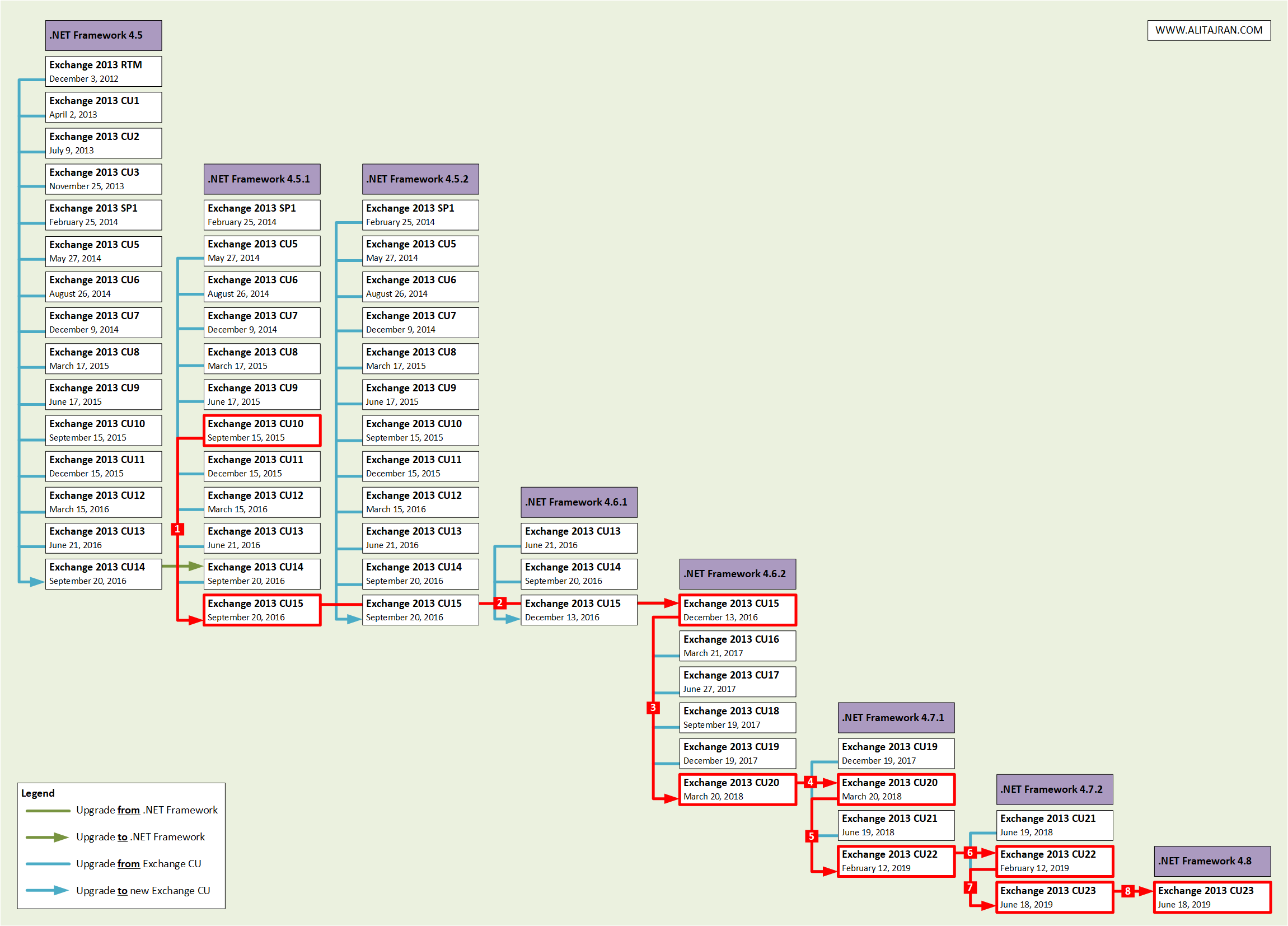
Exchange Server 2016
Let’s have an example with the following company called EXOIP. The company is currently running Exchange Server 2016 CU3 and .NET Framework 4.6.1. They want to update to the latest Exchange Server version, which is Exchange Server 2016 CU23. Let’s look at how to do that without breaking the Exchange Server.
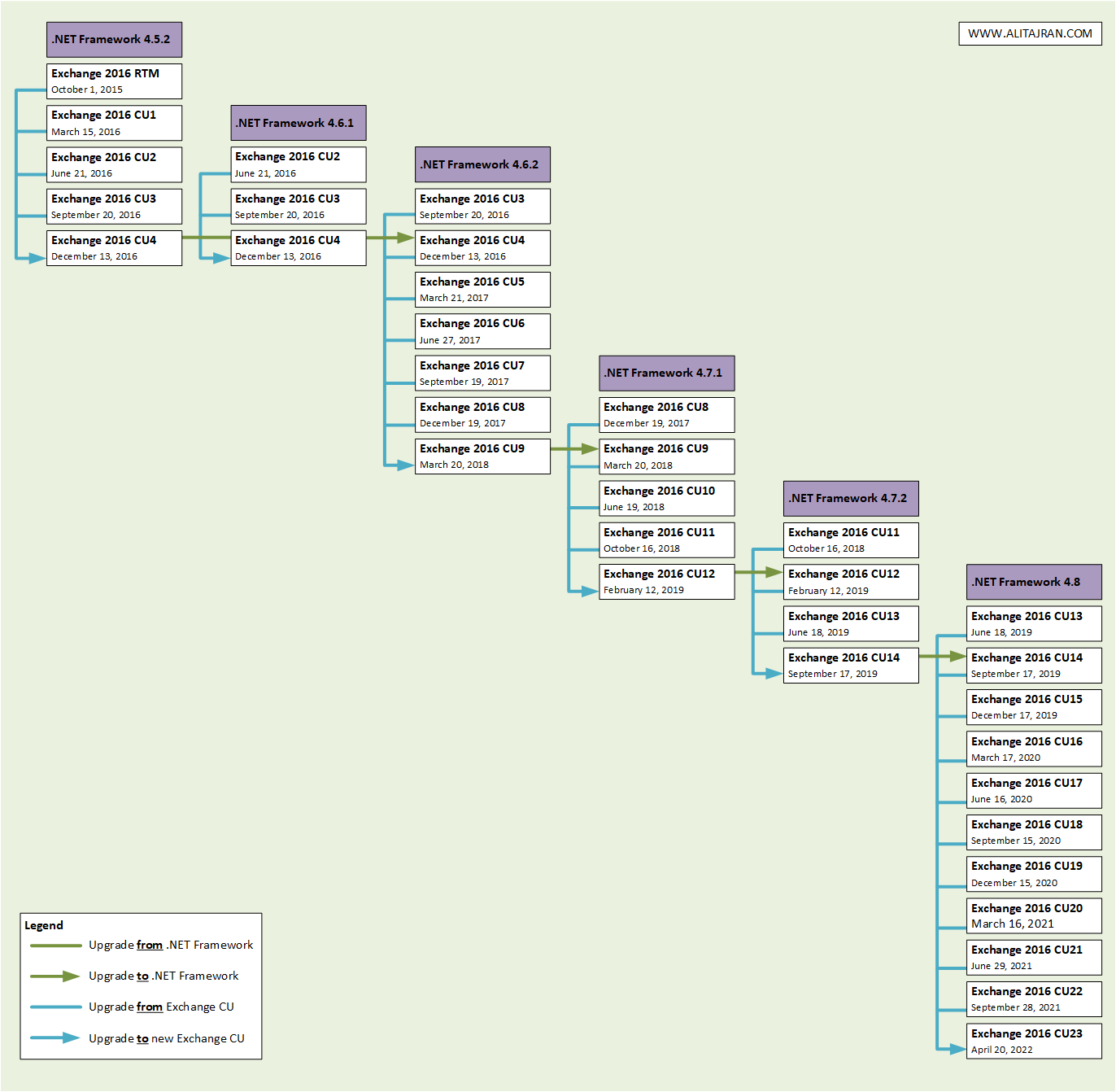
The Exchange 2016 upgrade compatibility path will be:
- Upgrade to Exchange 2016 CU4
- Upgrade .NET Framework to 4.6.2
- Upgrade to Exchange 2016 CU9
- Upgrade .NET Framework to 4.7.1
- Upgrade to Exchange 2016 CU12
- Upgrade .NET Framework to 4.7.2
- Upgrade to Exchange 2016 CU14
- Upgrade .NET Framework to 4.8
- Upgrade to Exchange 2016 CU23
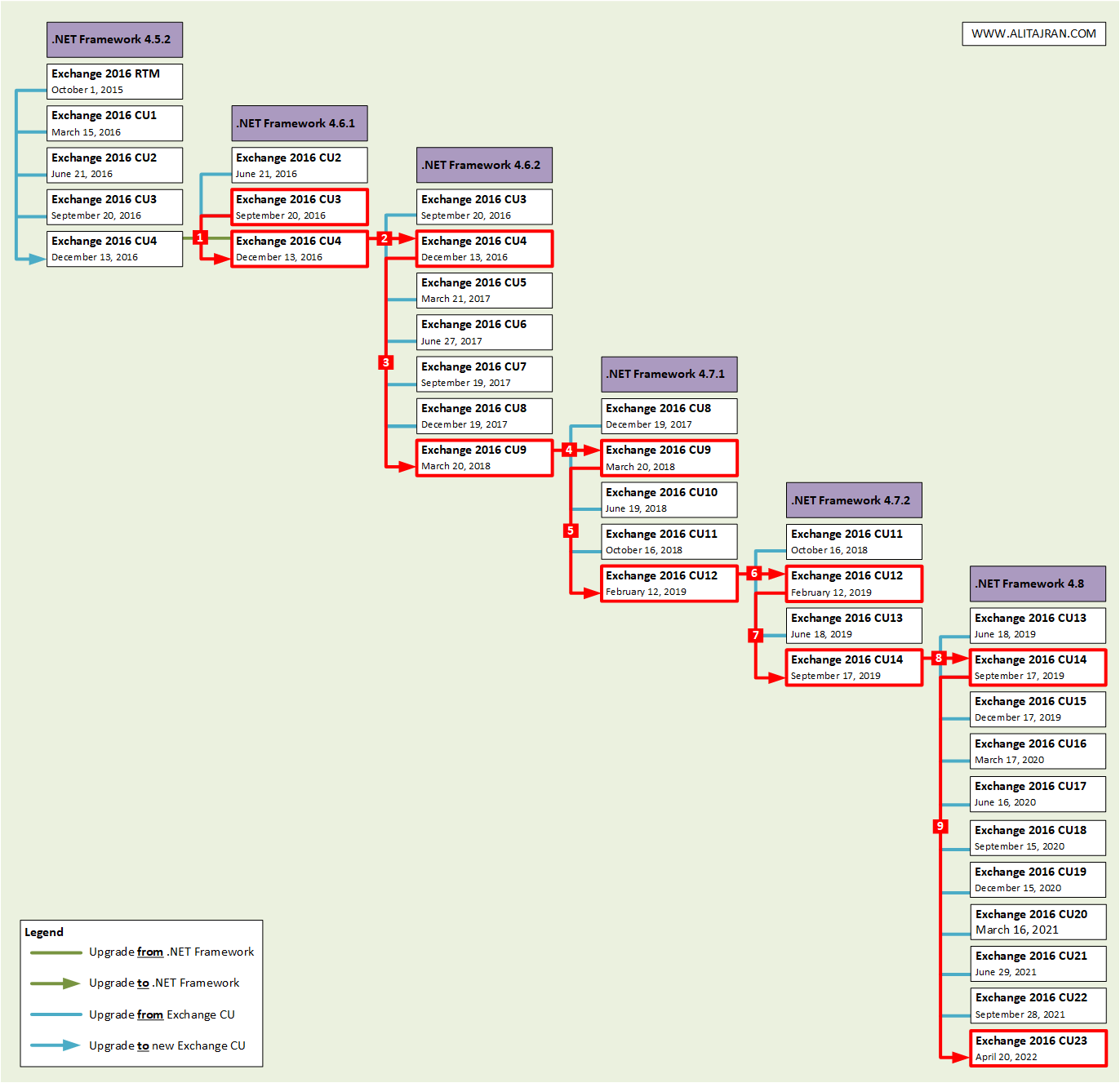
Exchange Server 2019
Let’s have an example with the following company called EXOIP. The company is currently running Exchange Server 2019 CU1 and .NET Framework 4.7.2. They want to update to the latest Exchange Server version, which is Exchange Server 2019 CU14. Let’s have a look at how to do that without breaking the Exchange Server.
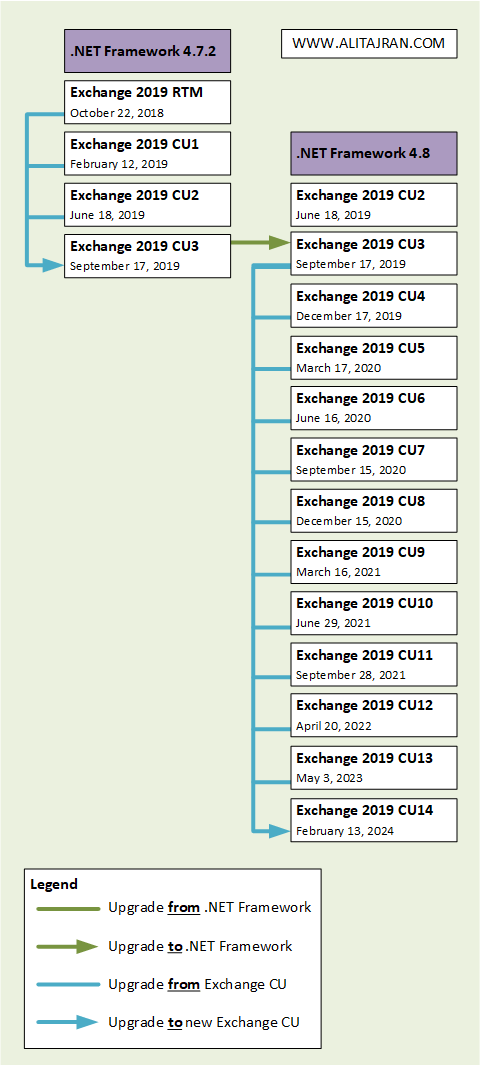
The Exchange 2019 upgrade compatibility path will be:
- Upgrade to Exchange 2019 CU3
- Upgrade .NET Framework to 4.8
- Upgrade to Exchange 2019 CU14
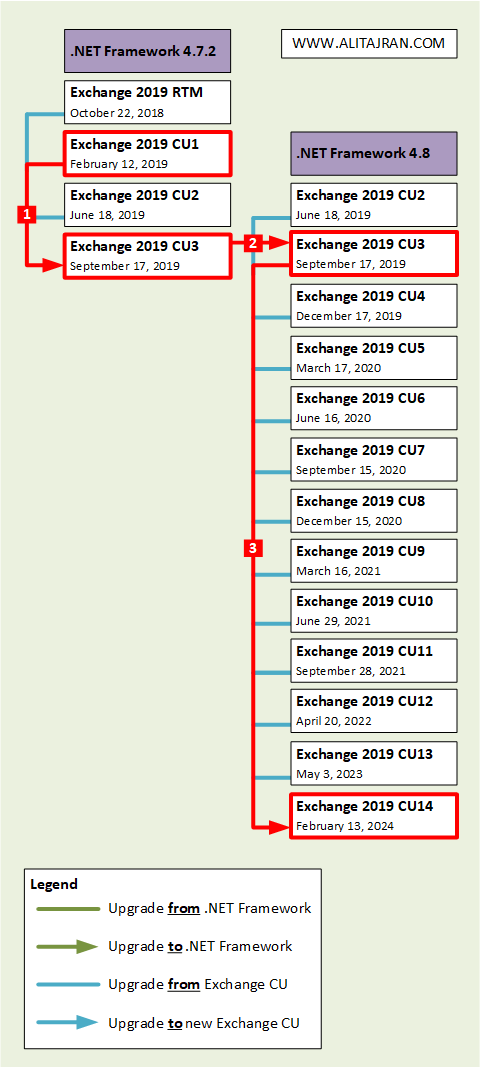
Articles that you may be interested in:
- Check which .NET Framework versions are installed
- Which .NET Framework for Exchange Server
- Find Exchange version with PowerShell
Conclusion
You learned how to update .NET Framework in Exchange Server. Save the Cumulative Updates when available for download, as Microsoft will delete them after a newer version comes out. You might need it when carrying out the update path.
Use the given flowchart. It’s easy to follow the update path for Exchange Server Cumulative Update and .NET Framework. Do not hesitate to use the comments below to ask any questions if you have them!
Did you enjoy this article? You may also like the article Install Exchange Server with GUI step by step. Don’t forget to follow us and share this article.
ALI TAJRAN is a passionate IT Architect, IT Consultant, and Microsoft MVP. He started Information Technology at a very young age, and his goal is to teach and inspire others. Read more »
Wondering how to install .NET framework 4.8 on windows server 2016? We can help you.
Installing the latest .Net framework on the server improves the performance and speed of the web apps.
At Bobcares, we often receive requests to install the .Net framework on the windows server as part of our Server Management Services.
Today, let’s discuss how our Support Engineers do it easily for our customers.
What is the .NET Framework?
.NET Framework by Microsoft is used to run and create applications and services which are based on the XML web.
The .NET software on Windows cannot run if the .NET Framework is not installed on the system.
The main advantages it provides include, Integration, Reliability, Performance, Productivity, and security.
How to install .NET Framework 4.8 on Windows 2016?
Recently, one of our customers approached us to install the latest .Net framework on his dedicated server. Let’s see how our Support Engineers install the .Net framework for them.
- Initially, we RDP to the server.
- Then open the web browser from the server and download the required .NET Framework from the below link.
https://dotnet.microsoft.com/download/dotnet-frameworkClick on the .NET Framework 4.8 link and the Download .NET Framework 4.8 option.
- Then right-click on the downloaded file. We click on the Properties and unblock it.
- Then double click on the file and complete the installation.
- After the .Net installation, the server will ask for a reboot. So we reboot the server.
- Then we open the corresponding Plesk panel of the server.
- Select the Tools and Settings from the Plesk.
- Then under the Applications & Databases, we choose ASP.NET Settings.
- Then we check whether the new version updates under Framework Version.
How to change the ASP.NET version on an account?
We follow the below steps to change the .Net version of an account.
- Firstly we log in to Plesk.
- Then from the left sidebar, we click Websites & Domains.
- After that select the account and click Hosting Settings.
- Then under the Web Scripting and Statistics, in the Microsoft ASP.NET support (Version) list box, we select the ASP.NET version.
- Finally, we click the Ok button.
Few Installation errors
We have also found that the installation may end up with errors. Here are some such instances and their solution by our Support Techs.
-
Installation failed with error code: (0x8000FFFF), “Catastrophic failure”
While installing .NET Framework v4.8, we may come across a “0x8000ffff catastrophic failure” error.
In order to solve this error we follow the below steps:
- Temporarily turn off the security software.
- Then open the command prompt and run as administrator:
DISM /Online /Cleanup-Image /RestoreHealth
- Check the permission of the C:\Windows\ System32 \CatRoot2\ folder and give full control to the NETWORK SERVICE and SYSTEM and CryptSvc accounts.
-
This application could not be started
Applications for the .NET Framework typically require a specific version of the .NET Framework to install on the system. In some cases, we attempt to run an application without either an installed version or the expected version.
This often produces an error dialog box stating, ‘This application could not be started’
This typically indicates one of the following conditions:
- Corruption of a .NET Framework installation on the system.
- The version of the .NET Framework needed by the application cannot be detected.
Our Support Techs resolve this by following the below procedure:
Initially, we download the .NET Framework Repair Tool (NetFxRepairTool.exe) from the URL: https://www.microsoft.com/en-us/download/details.aspx?id=30135‘
Once the download completes the tool runs automatically.
However, if the .NET Framework Repair Tool recommends any additional action, we select Next.
It displays a dialog box to indicate that changes are complete. We leave this dialog box open while we to try rerun the application.
This should succeed if the .NET Framework Repair Tool has identified and corrected a corrupted .NET Framework installation.
If the application runs successfully, select the Finish button. Otherwise, select the Next button.
If we select the Next button, the .NET Framework Repair Tool displays a dialog box regarding the logs to be sent to Microsoft. Select the Finish button to send diagnostic information to Microsoft.
If we still fail to run the application, we install the latest version of the .NET Framework supported by the version of Windows. Then attempt to launch the application.
In some cases, we may see a dialog box that asks to install the .NET Framework 3.5. Select Download and install this feature, then launch the application again.
[Need more assistance in installing .NET framework 4.8? We’ll help you.]
Conclusion
To conclude, we discussed how to install the .NET framework 4.8 on windows server 2016. Also, we saw how our Support Engineers help our customers install it.
PREVENT YOUR SERVER FROM CRASHING!
Never again lose customers to poor server speed! Let us help you.
Our server experts will monitor & maintain your server 24/7 so that it remains lightning fast and secure.
GET STARTED
var google_conversion_label = «owonCMyG5nEQ0aD71QM»;
The .NET Framework is a crucial technology developed by Microsoft that allows you to create applications for Windows. Version 4.8 is particularly popular due to its performance improvements, high compatibility, and enhanced security features. Installing .NET Framework 4.8 on Windows Server 2016 can significantly improve the efficiency of your applications that’s dependent on this framework. Below is a comprehensive guide on how to achieve this installation, including various methods, potential issues, and tips for ensuring a smooth process.
Understanding the .NET Framework
Before diving into the installation process, it’s important to understand what the .NET Framework is and why specific versions matter. The .NET Framework is composed of libraries and runtimes that enable developers to create applications more easily. Version 4.8 introduces several improvements over its predecessors:
- High-Performance Improvements: Better garbage collection and reduced memory overhead.
- Enhanced Security: Improved cryptographic algorithms and protections.
- Compatibility: Seamless side-by-side compatibility with multiple versions of the .NET Framework.
- New Features: Adds new APIs to improve the capabilities of your applications.
Preparing for Installation
Before starting the installation, you should ensure that your system meets the prerequisites to run .NET Framework 4.8.
System Requirements
- Operating System: Windows Server 2016 (essentials and standard versions).
- Processor: x86 or x64 processor; a 1.4 GHz or faster processor is recommended.
- Memory: Minimum of 512 MB RAM; 2 GB or more is recommended.
- Disk Space: At least 4.5 GB of free disk space.
Checking Current .NET Versions
To verify the currently installed version of the .NET Framework, you could use the following command in Command Prompt:
reg query "HKLMSOFTWAREMicrosoftNET Framework SetupNDPv4Full" /v ReleaseThe output value will help you ascertain if .NET Framework 4.8 or any other version is installed.
Installation Methods
There are several methods to install .NET Framework 4.8 on Windows Server 2016, including:
- Windows Features
- Standalone Installer
- Windows Update
Let’s take a deeper look into each of these methods.
Method 1: Installing via Windows Features
This is the simplest method if you have your server connected to the internet. You can enable it through the Server Manager.
Steps:
-
Open Server Manager
- Click on the Windows Start button, then select Server Manager from the Start menu.
-
Add Roles and Features
- In Server Manager, click on ‘Manage’ in the upper right-hand corner, and select ‘Add Roles and Features’.
-
Feature Installation
- Click on ‘Next’ until you reach the ‘Features’ step in the wizard.
-
Select .NET Framework 4.8
- In the ‘Features’ step, find and check ‘.NET Framework 4.8 Features’. You may see options for additional features like WCF Services; if needed, select them.
-
Install
- Click ‘Next’ and then ‘Install’. The installation process will begin.
-
Completion
- After the installation finishes, review the status and click ‘Close’.
Method 2: Using the Standalone Installer
You may prefer using the official standalone installer if you need to install the .NET Framework on multiple machines or if your server does not have a reliable internet connection.
Steps:
-
Download the Installer
- Go to the official Microsoft download page and download the .NET Framework 4.8 Developer Pack or Runtime Installer.
- Download .NET Framework 4.8
-
Run the Installer
- Locate the downloaded executable file, typically named
ndp48-x86-x64.exe, double-click it to initiate the installation.
- Locate the downloaded executable file, typically named
-
Accept License Agreement
- Read the license agreement and accept it to continue.
-
Installation Choices
- Choose either to perform a ‘Repair’, ‘Uninstall’, or ‘Install’. If you are installing for the first time, choose ‘Install’.
-
Complete the Installation
- Follow the prompts until installation is complete. Restart your server if prompted.
Method 3: Using Windows Update
If your Windows Server 2016 is configured to receive updates automatically, the .NET Framework 4.8 may already be available through Windows Update.
Steps:
-
Open Settings
- Click on the Start button, then select ‘Settings’ (gear icon).
-
Check for Updates
- Click on ‘Update & Security’ and then ‘Windows Update’.
- Click ‘Check for Updates’.
-
Install Available Updates
- If .NET Framework 4.8 is listed, follow the prompts to download and install it.
- Restart your server if necessary.
Verifying the Installation
After installation, you will want to ensure that the .NET Framework 4.8 is properly installed.
-
Check Windows Features:
- Go back to Server Manager, click on ‘Manage’, then ‘Add Roles and Features’.
- In the ‘Features’ section, confirm that .NET Framework 4.8 is listed as installed.
-
Using the Command Prompt:
- Run the same command as before in Command Prompt to verify the Release key:
reg query "HKLMSOFTWAREMicrosoftNET Framework SetupNDPv4Full" /v Release - The Release value for .NET Framework 4.8 should be 528040.
- Run the same command as before in Command Prompt to verify the Release key:
-
Using PowerShell:
- Open PowerShell and run:
Get-ChildItem "HKLM:SOFTWAREMicrosoftNET Framework SetupNDPv4Full" | Select-Object -Property Version, Release
- Open PowerShell and run:
Troubleshooting Common Issues
Even though installation is usually straightforward, you might encounter some issues. Here are common problems and how to resolve them.
1. Installation Fails
If the installer fails:
- Check .NET Center: Ensure your .NET Center has recent updates.
- Windows Update Conflict: Ensure no Windows Updates are pending installation.
- Insufficient Permissions: Make sure you are logged in with administrative privileges.
2. Missing Features
Sometimes, certain features of the .NET Framework may not function properly.
- Ensure that all related features in Server Manager are installed.
- Check Windows Features for necessary components.
3. Application Errors
If applications fail to run post-installation:
- Reboot the server.
- Ensure the applications are configured to target .NET Framework 4.8.
- Look into Event Viewer for application-specific errors.
Best Practices After Installation
- Regular Updates: Always keep .NET Framework updated with the latest patches.
- Monitor Application Performance: After installation, keep an eye on your applications to ensure they perform optimally.
- Backup: Always keep a backup of your important data before making software installations.
Conclusion
Installing .NET Framework 4.8 on Windows Server 2016 is a valuable step that can enhance the performance and reliability of your applications. By following the outlined methods and troubleshooting any potential issues, you’ll be well-equipped to leverage the full capabilities of .NET Framework 4.8. If you have any further questions or need assistance, feel free to consult the Microsoft official documentation or community forums for support.
With regular updates and maintenance, you can ensure your applications remain robust and efficient, ready for whatever challenges come your way in the ever-evolving tech landscape.
What is .NET framework
.NET framework is set of program libraries, designed and supported by Microsoft Corporation. Too much software products for Windows platform are needs this framework. Moreover, some built-in Windows programs uses .NET framework to render these windows.
Where .NET could be installed
As this product was developed by Microsoft company, it can be installed on the computer working under any Operation System developed by this company. So, to install you need computer under Microsoft Windows Server OS with privileged account.
Installation procedure
Microsoft .NET Framework installation is very user-friendly. Process description:
- Login to your server as administrative user, open Server Manager dashboard;
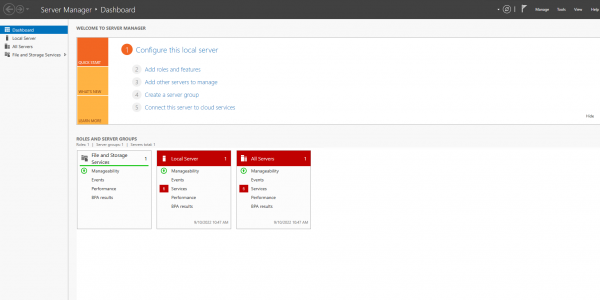
- Run the adding role wizard, first screen could be skipped with no pain. Set skipping by default if you want;
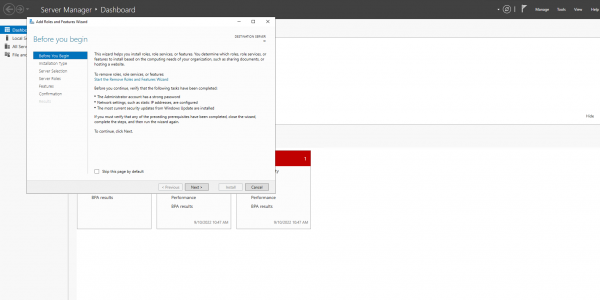
- Choose install type and destination server (this server is already set by default);
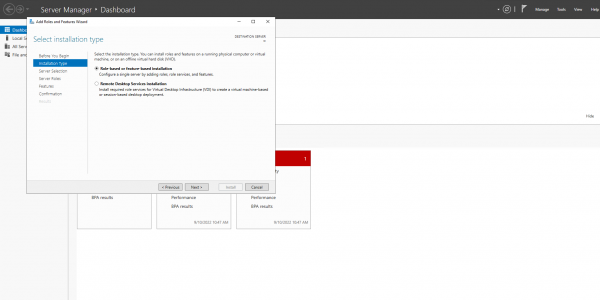
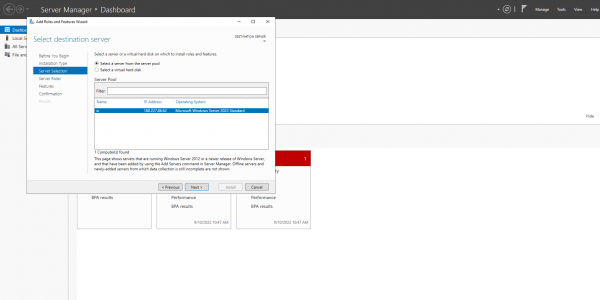
- Skip «Roles» tab, your aim is «Features». Set the ticks .NET Framework 3.5 and 4.8, then click to the Next button;
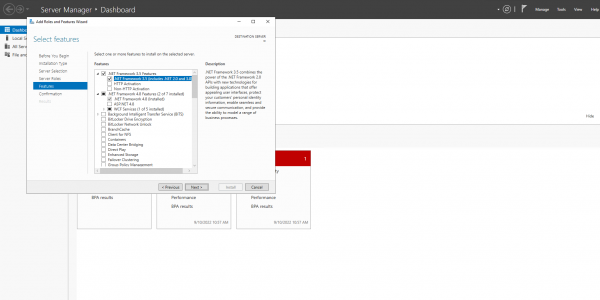
- Click to Install button to confirm changes and wait a little
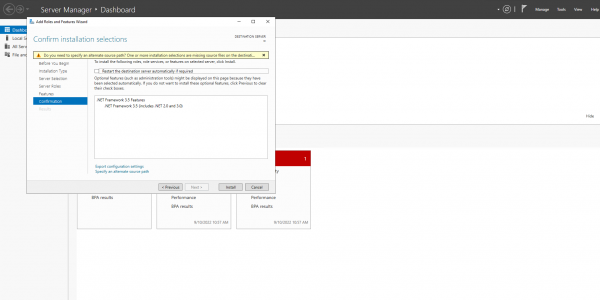
Alternative installation method
Other way to install .NET Framework is command line interface. Just open PowerShell as privileged user and run this command:
DISM /online /Enable-Feature /all /FeatureName:"<framework_version>"
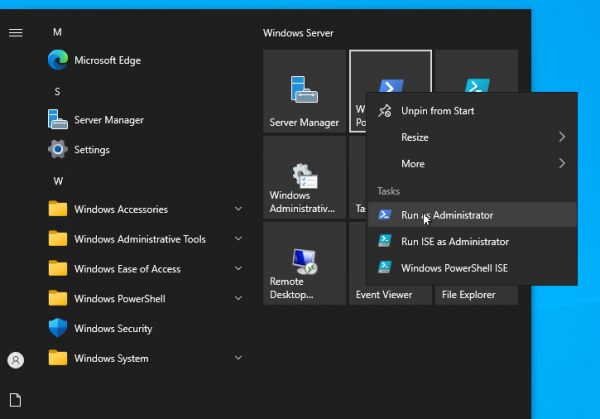
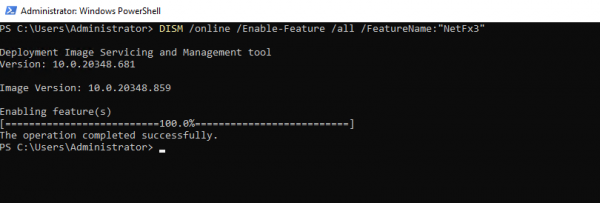
Conclusion
Now you know what is .NET Framework, where it is used in general and how to install it on Windows Server platform.
Аverage rating : 5
Rated by: 3
1101
CT Amsterdam
The Netherlands, Herikerbergweg 292
+31 20 262-58-98

700
300
ITGLOBAL.COM NL
1101
CT Amsterdam
The Netherlands, Herikerbergweg 292
+31 20 262-58-98

700
300
ITGLOBAL.COM NL

700
300

